| St. George's Institution |
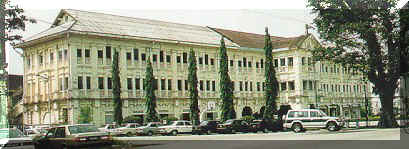 The Catholic boys'
school was established in 1915 and 13 years later the original building was
extended with a wing on each side. During the Japanese Occupation, the
school served in turn as Nippon-go Gakko(Japanese school), Kempeitai(Japanese military
police) base and Japanese officers' hotel. The Catholic boys'
school was established in 1915 and 13 years later the original building was
extended with a wing on each side. During the Japanese Occupation, the
school served in turn as Nippon-go Gakko(Japanese school), Kempeitai(Japanese military
police) base and Japanese officers' hotel. |
| King Edward VII School |
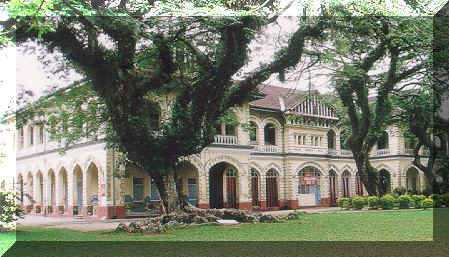 The
Central School, started in 1883, was the first English school in the Malay States. It was
renamed the King Edward VII School when the present building was opened in 1905. The
angsana trees of "the most picturesque school ground in Malaya" were planted in
1910. The school excelled in sports, especially football, rugby, hockey and athletics.
During the Japanese Occupation, the school was the base of the garrison commander who
converted the classroom into torture chambers and dug up the playgrounds to grow food. The
Central School, started in 1883, was the first English school in the Malay States. It was
renamed the King Edward VII School when the present building was opened in 1905. The
angsana trees of "the most picturesque school ground in Malaya" were planted in
1910. The school excelled in sports, especially football, rugby, hockey and athletics.
During the Japanese Occupation, the school was the base of the garrison commander who
converted the classroom into torture chambers and dug up the playgrounds to grow food. |
| Taiping Convent |
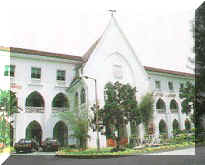 In
1899, the first convent was started in nearby Klian Pauh by three Sisters from the convent
in Penang. The class and orphanage in Taiping were upgraded when the present school
building at Kota Road opened in 1938. In may 1941, the British requisitioned it for a
large military hospital but in December it was taken over by the Japanese. Towards the end
of the war, the Taiping Convent became the headquarters of the Japanese military
administration, the Gun-sei Kan-bu. In
1899, the first convent was started in nearby Klian Pauh by three Sisters from the convent
in Penang. The class and orphanage in Taiping were upgraded when the present school
building at Kota Road opened in 1938. In may 1941, the British requisitioned it for a
large military hospital but in December it was taken over by the Japanese. Towards the end
of the war, the Taiping Convent became the headquarters of the Japanese military
administration, the Gun-sei Kan-bu. |
|
|
|
| British Officer's Mess |
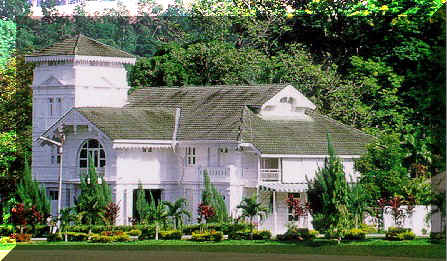 The Mess
building was of "pleasing design" and "contained expensive silver plates
and also souvenirs and relics dating back to the Battle of Waterloo" The Mess
building was of "pleasing design" and "contained expensive silver plates
and also souvenirs and relics dating back to the Battle of Waterloo" |
| Taiping's Prison |
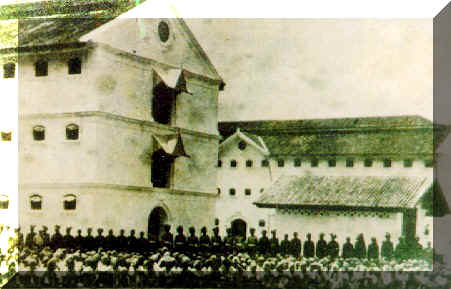 Established in 1879, the Perak Prison was
the main prison for long-sentenced convicts of the FMS. It housed the Government Printing
Office, a bakery and a laundry, where the prisoners did light work. Today, it is the
countryกฏs best example
of a 19th century gaol complex. Established in 1879, the Perak Prison was
the main prison for long-sentenced convicts of the FMS. It housed the Government Printing
Office, a bakery and a laundry, where the prisoners did light work. Today, it is the
countryกฏs best example
of a 19th century gaol complex. |
| Kapitan Chung Keng Kooi's
Townhouse |
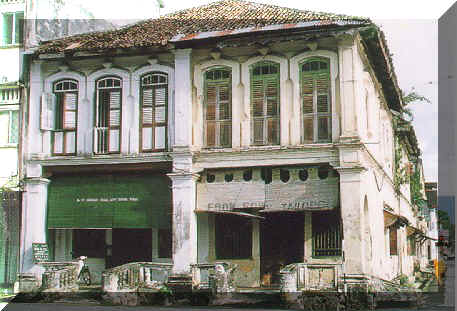 A
prominent tin-miner and leader of the Taiping Hakka community, Chung Keng Kooi (1829-1901)
was also a Kapitan China of Perak and sat on the Perak State Council. His eldest son Chung
Ah Yong, who resided here, was a member of the Taiping Sanitary Board and "all the
important racing clubs:. He employed an European trainer for his prize-wining race horses
and maintained his stables at 12,000 dollars a year. A
prominent tin-miner and leader of the Taiping Hakka community, Chung Keng Kooi (1829-1901)
was also a Kapitan China of Perak and sat on the Perak State Council. His eldest son Chung
Ah Yong, who resided here, was a member of the Taiping Sanitary Board and "all the
important racing clubs:. He employed an European trainer for his prize-wining race horses
and maintained his stables at 12,000 dollars a year. |
|
|